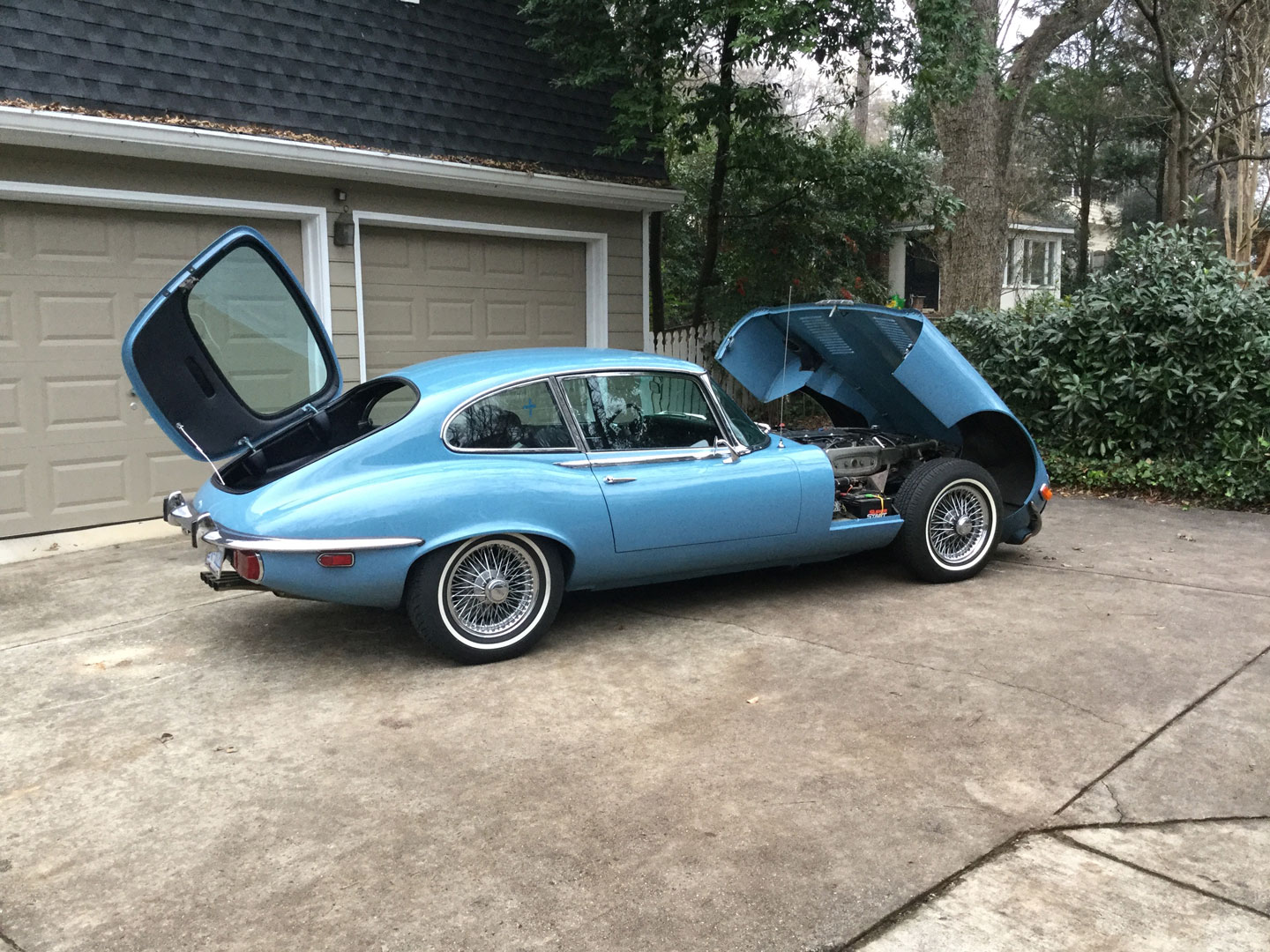Diagnosing intermittent bucking in a V-12 Jaguar
Let’s talk about that dreaded “dead car moment.” You know, one minute you’re driving along in your vintage car, living the dream, and the next, the car is dead by the side of the road and you’re trying to figure out why.
The “big six” things most likely to cause a car to transition from being self-propelled to an immobile object of scorn are fuel delivery, ignition, charging system, cooling system, belts, and ball joints. Failures of the latter three are identifiable simply by looking at them. Issues of fuel delivery, ignition, and charging are stickier and require a test.
If it’s fuel delivery, the car might hesitate, stumble, lose power, and die. Ignition problems usually feel binary—the car will simply die as if a switch were shut off.
The best method of telling fuel problems from ignition problems is to check for spark by pulling the wire from the center of the distributor and holding it with rubber gloves a quarter-inch from a good ground while you crank the engine. If there’s no spark, it’s an ignition problem. If there’s spark, remove the air cleaner, open the throttle, and give the car a blast of starting fluid down the throat. If the car starts and runs briefly and then dies, it has a fuel delivery problem.

Hagerty member Ferman Wardell is vexed by his 1971 Jaguar E-type V-12:
My Jaguar starts on cold mornings, runs smoothly, never overheats, doesn’t leak, and sounds terrific. I take it on trips and drive it around town often without a hitch. But when I was driving around town for several hours with temperatures in the low 70s, the engine bucked and slowly stopped. I cranked it back up, and it went for a mile or so with the same result but no restart. All fuses were good (I checked because the fuel pump had previously blown its 30-amp fuse). I used Hagerty Plus to tow the Jag home, and after about three hours and letting it cool off, the car cranked right up and ran great, and it has ever since. My Jag does not have points but an OEM electronic ignition. The fuel pump resides in the trunk, where it’s nice and cool. The fuel filter looked good. Any ideas?
On the one hand, “bucking” is typically due to fuel not being completely or properly burned, and I would recommend you check and change your spark plugs. But your description of events fits the profile of a fuel delivery problem due to a fuel pump that is dying from age or getting clogged by rust or sediment in the tank. Blowing a 30-amp fuse means that pump draws a lot of current. If I had the dead car here, I’d do the spark-then-starter-fluid test. If the car were running, I’d look at the spark plugs and check the fuel system from the tank to the fuel filter to the float bowls of the carbs for contamination.
That E-type has electronic ignition, but the original Lucas electric fuel pump does have contact points and a capacitor inside it, and these pumps can have intermittent problems. There should be a Bakelite plastic cover on the end of the fuel pump. Remove it, and the points should be visible. Rotate the pump armature, verify that the point faces are separating, and visually inspect them. You can lightly sand them if they’re burned or pitted, but replacement is always preferable to sanding. Gap the points properly. Other modifications can be made to lessen or eliminate the issues due to the in-pump contact points. For more info, search for “Lucas fuel pump” at jcna.com and visit ntahc.org/techtips-21/.

